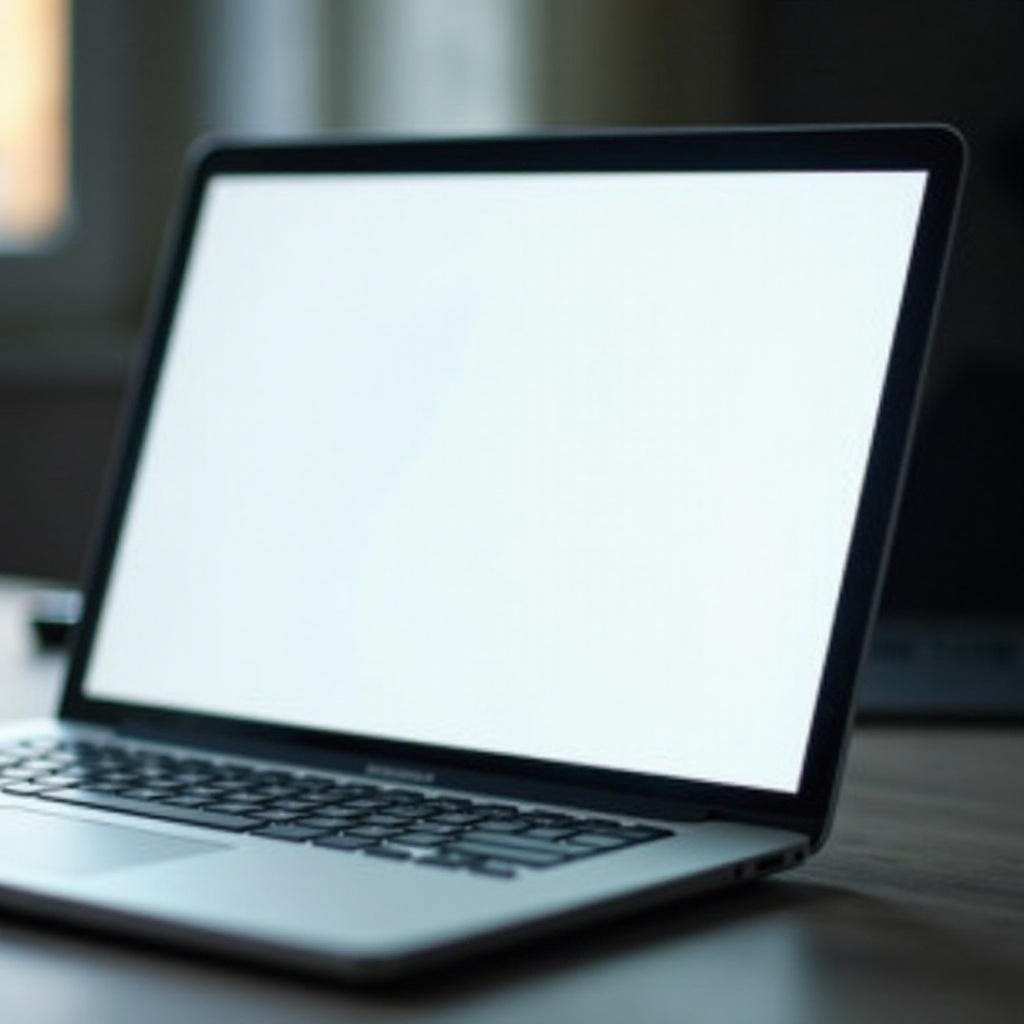Introduction
A laptop screen that turns partially white can disrupt your productivity and hamper your digital experience. This issue can stem from various causes, including software glitches and hardware malfunctions. In this guide, we will walk you through the possible reasons why your laptop screen may be partially white and provide practical troubleshooting steps to help you resolve the issue. Whether you're a tech novice or an experienced user, these steps will guide you in diagnosing and fixing the problem.
Understanding the Problem
It's crucial to understand the nature of the partially white screen issue before diving into solutions. This awareness will help you identify the root cause and apply the appropriate fix.
Common Causes of a Partially White Screen
- Software glitches
- Outdated or faulty graphics drivers
- Loose or damaged screen connectors
- Hardware failures like defective backlights, inverters, or GPUs
Symptoms and Indicators
To diagnose the problem, observe the specific symptoms:
- A portion of the screen displays white, while other parts work normally.
- The issue persists across different applications and windows.
- Connecting an external monitor shows a normal display, indicating the problem is with the laptop screen.
Understanding these causes and symptoms provides a foundation for the subsequent troubleshooting steps.
Basic Troubleshooting Steps
Let's start with some basic troubleshooting methods that might resolve the partially white screen issue without requiring extensive technical expertise.
Restart Your Laptop
Sometimes, a simple restart can fix the issue by refreshing the system and eliminating temporary glitches. Follow these steps:
- Save your work and close all applications.
- Restart your laptop using the operating system's restart feature.
Update Graphics Drivers
Outdated or corrupted graphics drivers can cause display issues. Here's how to update them:
- Open Device Manager.
- Expand the 'Display adapters' section.
- Right-click on your graphics card and select 'Update driver.'
- Follow the on-screen instructions to install the latest driver.
Check Screen Connectors and Cables
Loose or damaged screen connectors can also cause partial white screens. To check and reseat the connectors:
- Turn off your laptop and unplug all cables.
- Carefully open the laptop casing to access the screen connectors.
- Ensure all connectors are firmly attached and free from damage.
- Reassemble the laptop and restart it.
These basic steps often fix the issue. If the problem persists, move on to more advanced troubleshooting methods.
Advanced Troubleshooting
If basic troubleshooting fails to resolve the issue, you may need to delve deeper into more advanced solutions.
Run Diagnostics Tools
Most laptops come with built-in diagnostic tools:
- Restart your laptop and press the designated key (usually F12 or ESC) to enter the diagnostics mode.
- Run the diagnostic tests and follow any recommended fixes.
Check for Software Conflicts
Conflicting software can also cause display issues:
- Boot your laptop into Safe Mode.
- Uninstall any recently installed software that might conflict with your display.
- Restart your laptop to see if the issue is resolved.
Test with an External Monitor
Connecting your laptop to an external monitor can help determine if the issue is with the screen or other hardware:
- Connect your laptop to an external monitor using an HDMI or VGA cable.
- If the external monitor displays normally, the issue lies with your laptop screen.
Advanced troubleshooting can identify more complex issues. If your laptop screen is still partially white, it may be due to hardware problems requiring professional repair.
Investigating Hardware Issues
Hardware issues are often the underlying cause of a partially white screen. Let’s examine the common hardware components that could be the culprits.
Inspecting the Screen for Physical Damage
Physical damage such as cracks or water damage can affect screen functionality:
- Examine your screen for visible signs of damage.
- If you find any, consider replacing the screen.
Assessing the Backlight and Inverter
The backlight and inverter are essential for screen illumination:
- Dim or flickering areas might indicate a backlight or inverter issue.
- Replacing these components can restore normal screen brightness.
Exploring GPU-related Issues
The Graphics Processing Unit (GPU) is critical for rendering images:
- If you're experiencing distortions or partial white screens, your GPU might be faulty.
- Consult a professional to diagnose and possibly replace the GPU.
Identifying hardware issues often requires professional assistance. If you’re unable to fix these problems on your own, seek help from a technician.
Professional Repair and Replacement
If DIY troubleshooting hasn’t resolved the issue, professional repair or replacement might be necessary.
When to Seek Professional Help
Consider professional help if:
- The issue persists after following all troubleshooting steps.
- You are uncomfortable opening and handling the laptop's internals.
Cost Estimates for Repairs
Repair costs vary based on the issue:
- Screen replacement: generally between $150-$300.
- GPU repairs or replacements: could vary from $200-$500.
Professional intervention may be the best solution to restore your laptop to full functionality.
Conclusion
Dealing with a partially white laptop screen can be frustrating, but understanding the causes and applying these troubleshooting steps can help you address the issue effectively. Whether the problem is software-related or due to hardware malfunctions, this guide offers solutions to restore your screen to its optimal state. If all else fails, seeking professional help ensures your laptop gets the necessary repairs.
Frequently Asked Questions
Why is my laptop screen half white?
A partially white screen can be caused by software issues, such as driver conflicts, or hardware issues, like a faulty screen, connectors, or GPU.
Can a partially white screen be fixed at home?
Many issues can be resolved at home by following troubleshooting steps like updating drivers and checking connections. However, hardware problems may require professional repair.
How much does it cost to fix a laptop screen?
Screen repair costs vary. Screen replacements generally range from $150 to $300, while more complex repairs, such as GPU replacement, can cost between $200 and $500.
